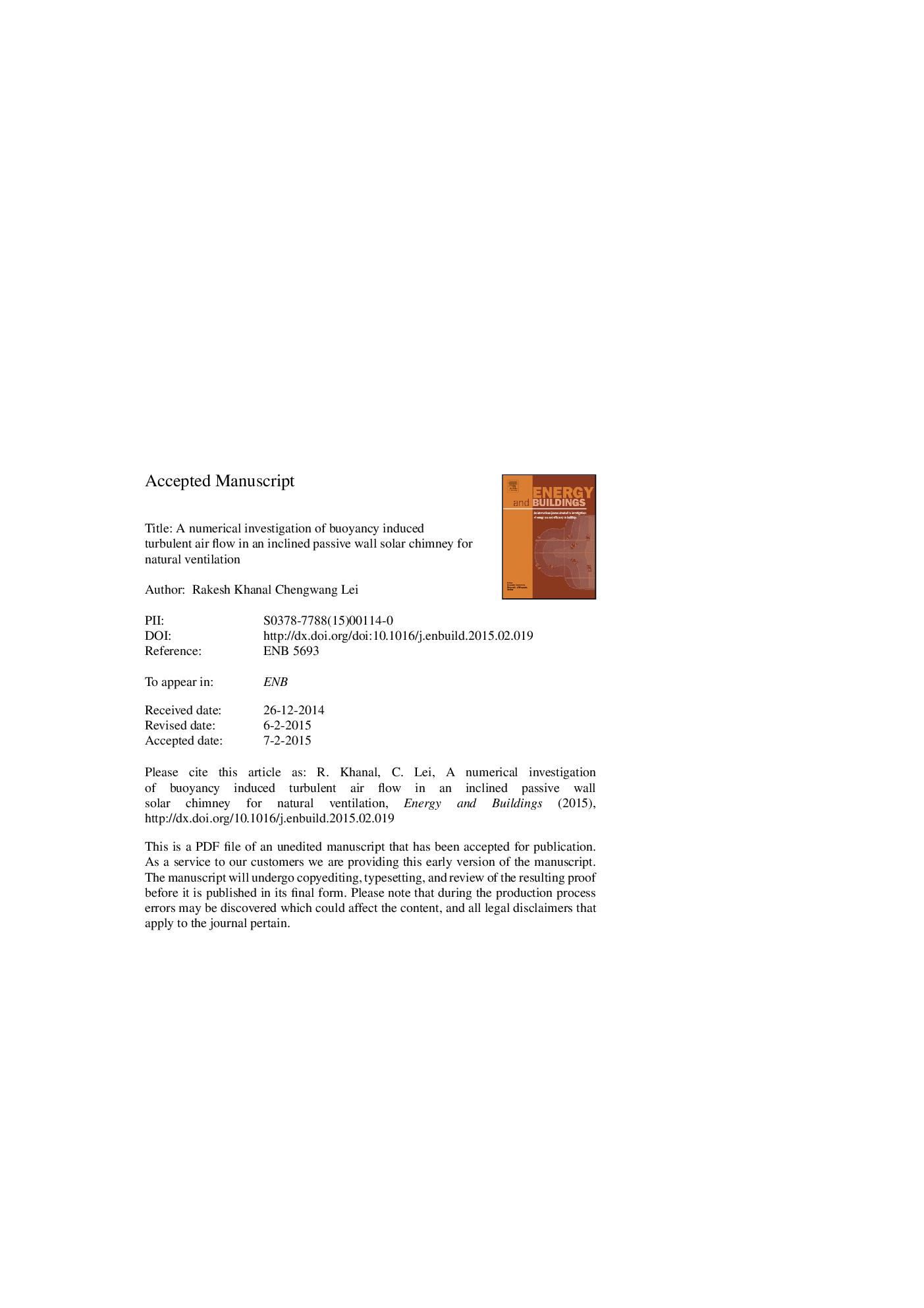| Article ID | Journal | Published Year | Pages | File Type |
|---|---|---|---|---|
| 6731903 | Energy and Buildings | 2015 | 28 Pages |
Abstract
This paper reports a numerical investigation of the buoyancy induced turbulent air flow in an inclined passive wall solar chimney (IPWSC) attached to a room (ventilated space) for ventilation applications over a range of controlling parameters. The standard k âÂ É turbulence model has been employed to model air turbulence in the solar chimney system. With an isoflux heating condition specified on the absorber wall, the ventilation performance of the IPWSC design has been examined over the Rayleigh number range of 1.36 Ã 1013 â¤Â Ra â¤Â 1.36 Ã 1016 and inclination angles from 0Ì to 6Ì. The present numerical result shows that the turbulent kinetic energy and turbulent intensity in the solar chimney decrease with the increase of the inclination of the passive wall. The effectiveness of the IPWSC design for enhancing the thermally driven ventilation has been confirmed. Additional simulations have been carried out with a standalone solar chimney model. The result shows that the standalone model over-predicts the mass flow rate compared to that predicted by the attached model. The average difference in the predicted mass flow rates between the standalone model and the attached model with inclination angles from 0Ì to 6Ì at a representative Rayleigh number of Ra = 1.36 Ã 1014 is around 10%.
Related Topics
Physical Sciences and Engineering
Energy
Renewable Energy, Sustainability and the Environment
Authors
Rakesh Khanal, Chengwang Lei,
